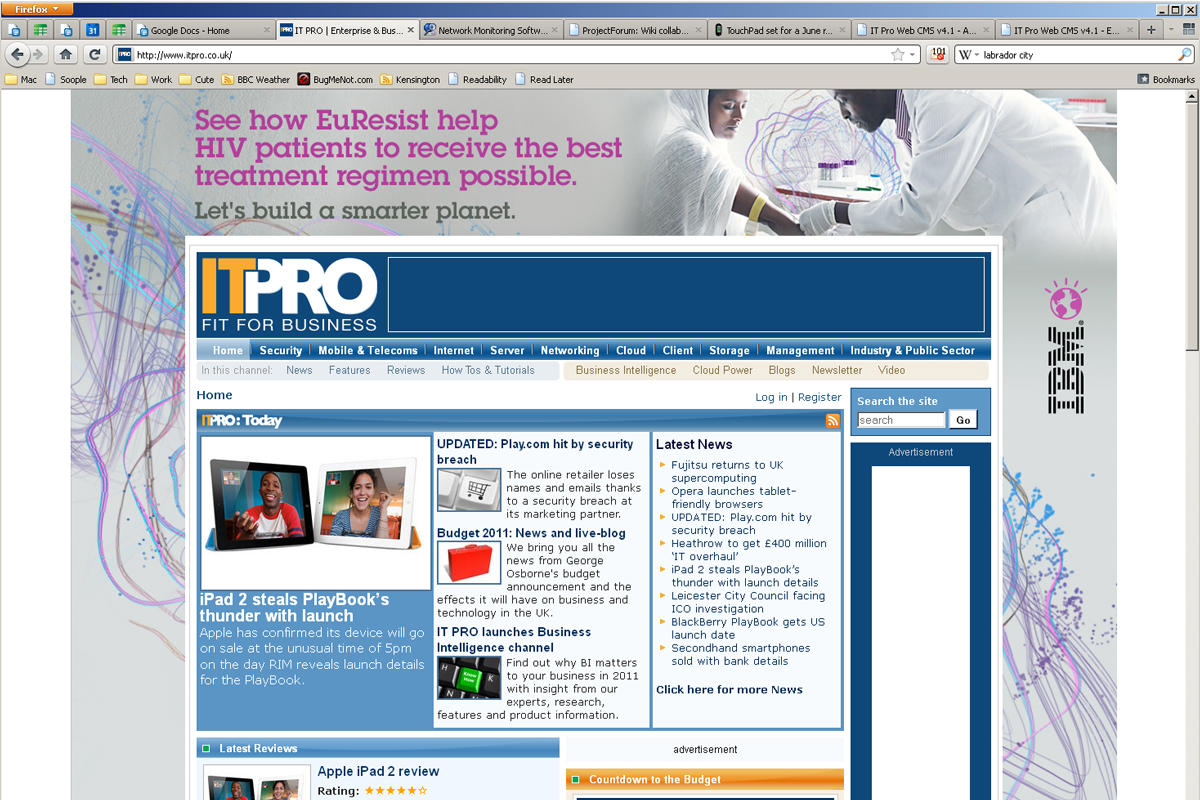Mozilla Firefox 4 review
The long-awaited Firefox 4 is finally here, but is Mozilla's latest browser a must-have or a has-been? Read our review to find out.
Firefox 4 is the best version of Mozilla's web browser yet. We're fond of the fast rendering speeds, the useful Tab Groups feature and the interface as a whole, even if it is a little derivative. We also like the broad selection of available add-ons. Although you can't go too far wrong with any of the modern browsers, Firefox 4 is our preferred pick.

Mozilla Firefox 4

Mozilla Firefox 4's new interface

Tab Groups in Mozilla Firefox 4
Unlike Microsoft's latest browser, Mozilla's new Firefox 4 is compatible with Windows XP. This will immediately pique the interest of companies who have yet to migrate to Windows 7, but still want to use a more capable browser than the sluggish and clunky Internet Explorer 8. In any case Firefox 4 is here and you wouldn't mistake it for any previous version of Mozilla's open source browser.
Firefox 4 has a dramatically redesigned user interface that's quite a departure from the one seen in previous versions, but it also bears a striking resemblance to Google Chrome. The tabs now sit above the address bar which, combined with the lack of a menu bar, maximises the amount of screen space devoted to actual web content. A Windows Start menu-style Firefox menu contains the most common menu commands with the Bookmarks menu accessible from the Bookmarks toolbar, if you choose to leave it visible. It's possible to restore a more traditional appearance though, with a menu bar and tabs below the address bar.
Tabbed browsing has been given a makeover with an intriguing new feature called Tab Groups. Multiple windows full of tabs can be managed from a single visual overview without cluttering up your desktop and Task Bar with lots of windows. This is useful if you're addicted to tabbed browsing and juggle tabs related to different tasks and projects. Tabs can be dragged and dropped between groups, groups can named or resized so, for example, more important Tab Groups are bigger than less important ones.
Like Chrome, individual tabs can be 'pinned' so that they can't be closed which is useful for web applications, such as Google Docs, that you might always want accessible. If you start typing the address of a web page that's already open in another tab, Firefox offers to take you to that tab without reloading the page.
Get the ITPro daily newsletter
Sign up today and you will receive a free copy of our Future Focus 2025 report - the leading guidance on AI, cybersecurity and other IT challenges as per 700+ senior executives
-
 LockBit ransomware group falls victim to hackers itself
LockBit ransomware group falls victim to hackers itselfNews A data leak has revealed negotiations with victims, along with Bitcoin wallet addresses, affiliate accounts and details of attacks
By Emma Woollacott Published
-
 AI-powered banking fraud on the rise – but financial institutions are fighting back
AI-powered banking fraud on the rise – but financial institutions are fighting backNews Banks are increasingly using AI to combat scams, but say that the need for good data management can make progress slow
By Emma Woollacott Published
-
 ESET targets partner profitability with new MDR bundle
ESET targets partner profitability with new MDR bundleNews The security firm's managed detection and response services and products are now available as part of a single SKU to enhance the partner sales process
By Daniel Todd Published